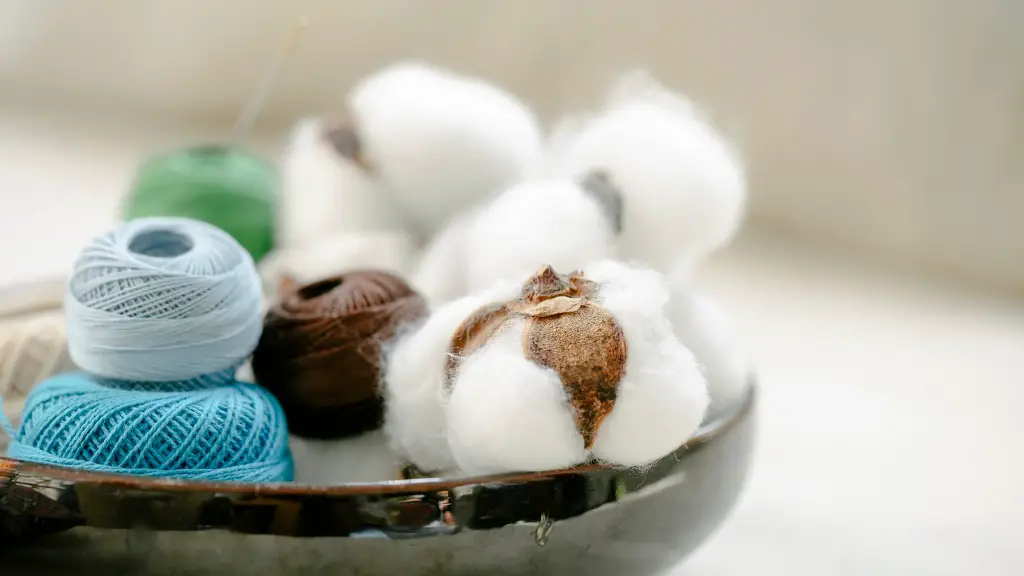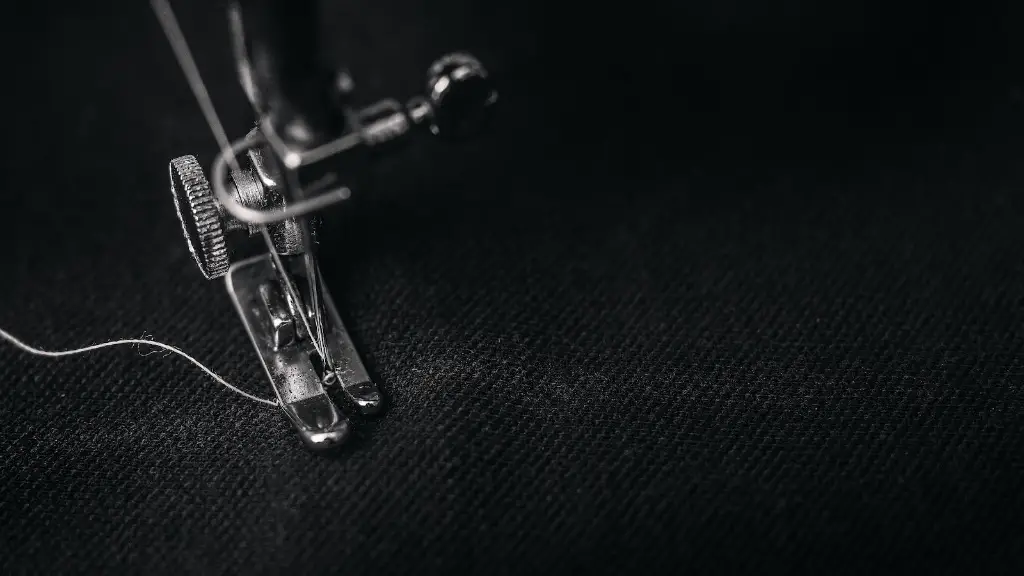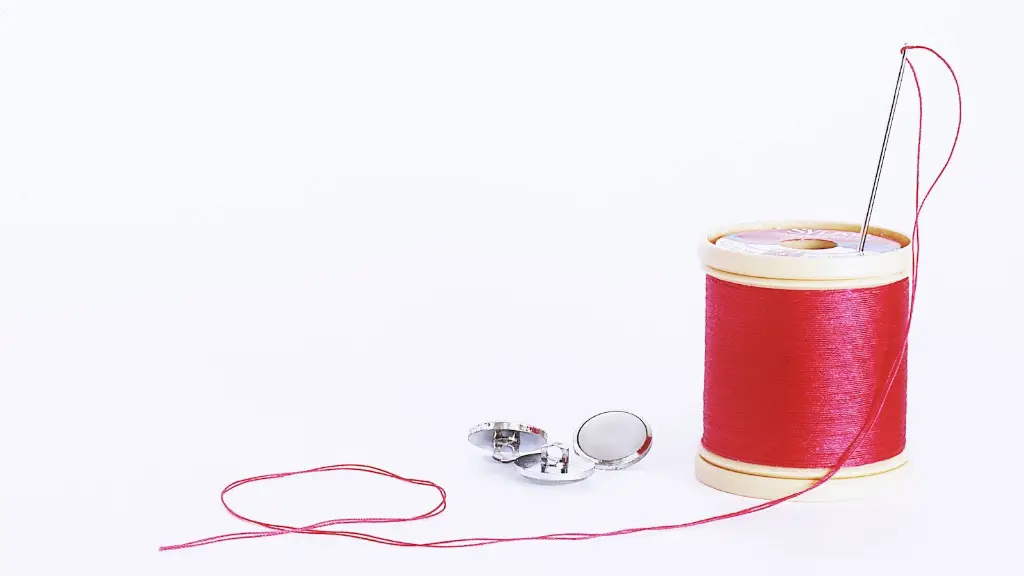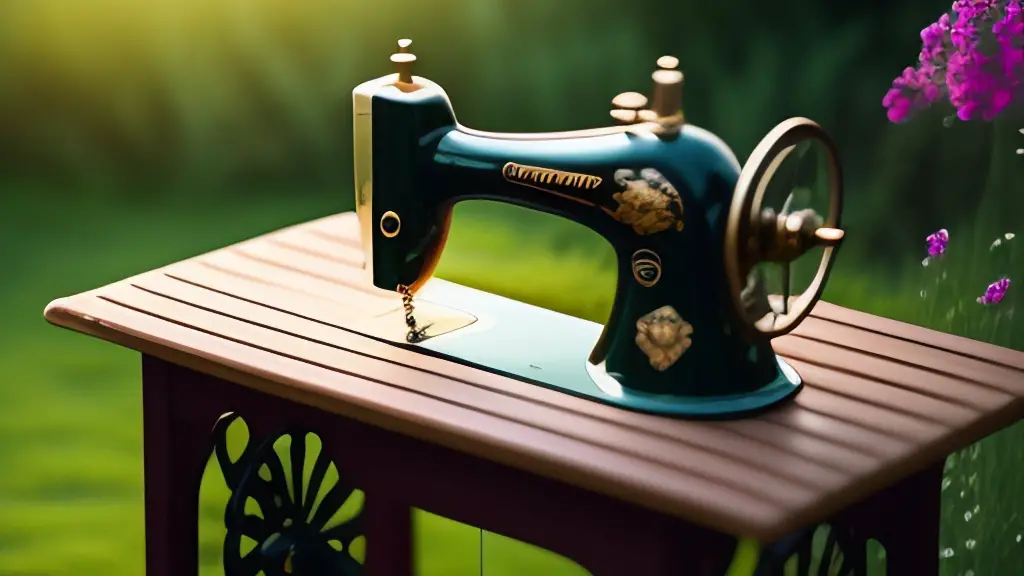Introduction: Sewing Felt With A Sewing Machine
Felt is a material made from a blend of natural and synthetic fibres, usually wool or wool blend, and is traditionally seen as the ideal fabric for crafts and DIY projects. It is easy to work with and manipulate, and can be used for all types of things from hats and bags to wall hangings and bunting. Many people choose to use felt as the main fabric for their projects, but does this mean you can use a sewing machine to sew felt?
Can A Sewing Machine Sew Felt?
The short answer is yes, you can use a sewing machine to sew felt. However, there are a couple of limitations you should be aware of. Firstly, because felt is thicker than other fabrics, you should check whether your sewing machine is suitable for thicker fabrics and if not, whether you need to make any adjustments to enable it to cope with the felt. Secondly, you should use a larger needle, such as a 90/14 or 100/16, as regular needles used with lightweight fabrics can easily break. With these considerations in mind, you can confidently sew felt on a sewing machine.
How To Prepare Felt For Sewing
Before you can sew felt on your sewing machine, you need to prepare the fabric correctly. Begin by taking your felt and ironing it, making sure the fibres don’t curl up and become tangled. Once the felt is flat, you can pin it together ready for sewing. The pins should be placed at a 90 degree angle to the edge of the fabric to avoid gaps and bunching. Finally, make sure your sewing machine is set to the correct stitch (straight stitch for beginners), needle type and tension, as these parameters can affect the outcome considerably.
What Are The Benefits Of Sewing Felt?
Sewing felt has many advantages. It is quite easy to work with and very malleable which means it can be used for a wide variety of projects. Once you have mastered the basics, the possibilities are endless! Felt is also durable, absorbent and warming, making it a great choice for home furnishings and bedding. Finally, it is very affordable and easier to source than many other fabrics.
Tips For Sewing Felt With A Sewing Machine
For best results, it is important to use the correct techniques for sewing felt. Firstly, use a slightly longer stitch length to avoid bunching and a small zigzag stitch to lock the edges. Secondly, use a low speed when feeding the fabric through your machine and make sure you don’t pull or stretch the felt. Finally, when pressing the seam, use damp fabric to prevent the felt from melting.
Finishing Off Your Felt Projects
Once you have sewn your felt project, there are a few finishing touches you can add to make it even more special. You could add buttons and appliqué to make it unique, or embellish it with decorations or ribbons. You could also add embroidery and add texture by using different felt fabrics. Whatever you choose to do, remember to have fun and be creative.
How To Sew Felt Toys And Softies
One of the most popular uses for felt is sewing toys and softies. These are often made using thicker felt, such as craft felt, as they require more structure. As with all other felt projects, begin by preparing the fabric before pinning and cutting. In addition, you should also use a running stitch when sewing pieces together. This gives a more flexible and fluid finish, rather than a stiff one.
Choosing The Right Felt For Sewing Projects
Finally, it is important to choose the right felt for your project. Craft felt is perfect for toy and softie making, whereas for apparel and accessories, it is best to use dressmaker’s felt as it is less bulky and more durable. In addition, machine-washable felt is ideal for blankets and clothing. Consider how you want your finished item to look and use the appropriate felt for the job.
Common Challenges Of Sewing Felt
While sewing felt is relatively straightforward, there are a few challenges you should be aware of. As felt is a thicker fabric, it can be difficult to sew consistent and even seams. You should also be careful when pressing it as felt can easily melt when exposed to too much heat. Finally, thread can sometimes be visible on the face of the fabric, so it is important to use a thread that is the same colour as your felt and ensure your threads are good quality and strong.
Fusing and Bonding Felt
If sewing isn’t your preference there are other ways to join felt pieces together. Fusing and bonding felt is becoming increasingly popular, especially amongst those making soft toys or accessories. These techniques involve using a hot glue gun or fusible web to join the felt together, giving a stronger finish than sewing. It is important to note, however, that the finished item cannot be washed or dry cleaned if it was made using these methods.
Laser Cutting Felt
In addition to the traditional methods of joining felt, laser cutting is also becoming a popular way of creating felt pieces. Using a laser cutter, intricate shapes and patterns can be cut from felt quickly and precisely. This is especially useful for detailed appliqué and for adding textured effects to felt items.
Advantages of Sewing Felt By Hand
For more delicate projects, sewing felt by hand can often produce better results than using a sewing machine. A few of the advantages of hand sewing felt are that it is more precise and the stitches are easier to control. It can also allow for less bulky seams and a more cohesive finish. Finally, hand sewing is often less time consuming than using a sewing machine.
Creative Ways To Sew Felt
Once you have mastered the basics of sewing felt, there are plenty of ways to get creative. Using felt scraps and scraps of fabric, you could create unique patchworks and quilts; or you could use larger strips of fabric to create a colourful felt skirt. You could also try dying your felt to create unique and colourful projects. With felt, the possibilities really are endless.



